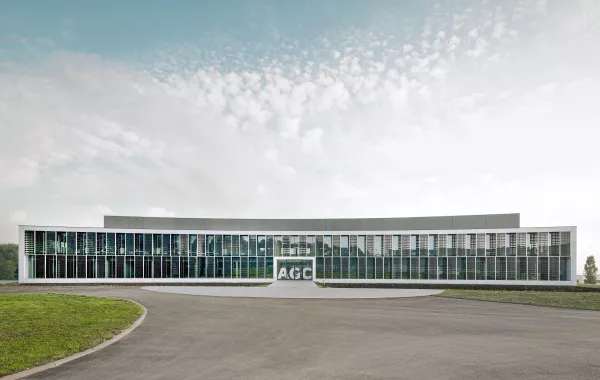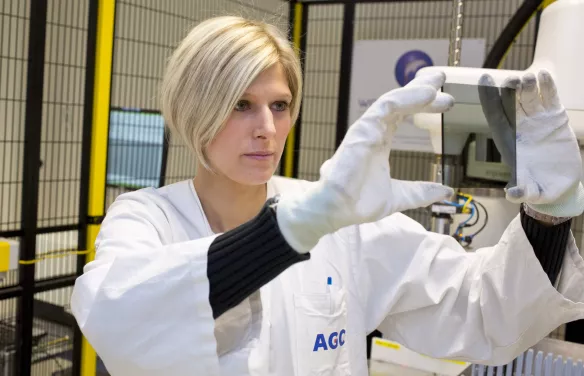

AGC’s glass production processes now consume less energy than ever before thanks to the new technologies and benefits issuing from Industry 4.0. AGC glass itself has reached unprecedented levels of insulation and solar control performance, while constantly improving ways to connect people.
Buildings account for around 40% of energy consumption and CO2 emissions, and AGC has been working on sustainable glass solutions for years. Vacuum insulating glass and smart-tinting glass are two of the energy-efficient solutions AGC has recently developed as part of its efforts to evolve towards comfortable zero carbon buildings.
Not only can glass control energy, but it can also play a role in generating electricity. Our active glass featuring embedded PV cells and our solar mirrors for solar farms are becoming increasingly efficient in order to meet the need for power generated from renewable energy sources.
Smart cities require full connectivity. De-coated glass that lets through more telecommunication signals and invisible antennas on windows can help build tomorrow’s connected cities.
In line with Industry 4.0, AGC is evolving into an industry driven by big data. This use of data leads to significant reductions in the energy consumption of our processes and to mass customisation.
Our Technovation Centre is focused on improving glassmaking processes and developing new glass properties and products. With more than 300 people and 19 different nationalities working together in Gosselies, Belgium, the centre boasts expertise in different glass-related fields such as glass melting, surface treatment, electronics, antennas, engineering, and more. consumption of our processes and to mass customisation.


